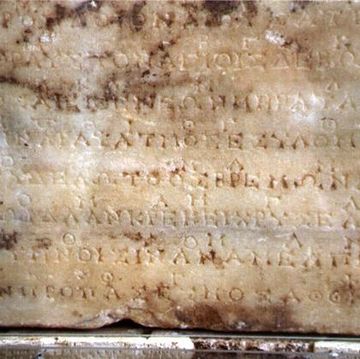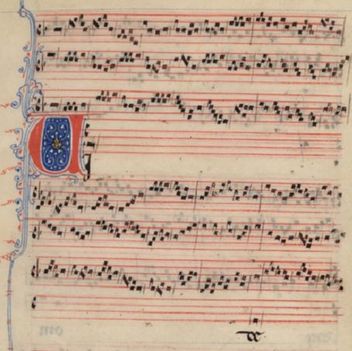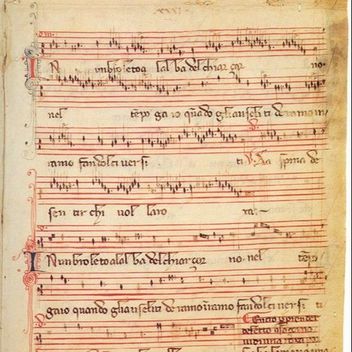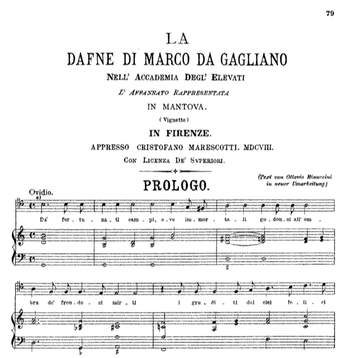|
GREEK SINGING
There is evidence that human cultures have almost always sung, but for our purposes I’m going to start with the Greeks. The Greeks had a complex musical system of notation which today we can't actually read; their poetry was often sung, and the video below is an example of the oldest surviving song we have by the ancient Greeks, composed around 200 B.C.
The Greeks had developed a form of theater that was sung. These works would have been performed by choruses with limited instrumental accompaniment. But again, we're not really sure what it sounded like.
MEDIEVAL SINGING
What we really recognize at modern musical notation began during the middle ages. Medieval music would have been performed in intimate settings, for groups, and by soloists. For these solos some volume would have been required, but again, the setting would likely have been small and so efficient projection and resonance not especially necessary. "Als I Lay on Yoolis Nicht" below is a medieval Christmas song. The later medieval age saw the the development of western polyphony, or harmony, in religious chanting.
RENAISSANCE
Due to the rise of harmony, the Renaissance focused largely on choral singing. This type of singing depended on the presence of multiple singers for the volume needed to fill large cathedrals (for liturgical singing) or palaces (for secular madrigals).
THE ADVENT OF OPERA
Opera was invented 1597, but the composers hadn't actually meant to invent a new art form. They simply were trying to recreate Greek theater. However, then as now, they didn't know what Greek theatrical music sounded like, and they idealized it. They added an orchestra and they wrote solos. Vocalists had to figure out a way to make the human voice louder or more resonant than all of the instruments. They also had to increase endurance—operas are often three hours long. That’s a long time to sing. And so the real study of the voice—and the most efficient way to use it—began. Eventually vocalists sang over more and more powerful orchestras simply by managing their vocal production with acoustic efficiency.
THE MICROPHONE
Okay, so I’m going to skip like a couple hundred years here in the interest of time, and go right to an extremely important invention: the microphone. The first microphone was built in 1870, but it wasn’t until the 1920s that it came into fairly common use in music. The microphone allowed singers to sing over all kinds of background music and be heard, no matter how they were singing. Without a microphone, this song would never have been possible:
THE DIGITAL AGE
Today we live in a digital deluge, and the impact on singing is immense. As I discuss in this blog post, much of what we hear is not actually produced by the human voice. I feel that this often leads to vocal dysphoria and an unwillingness to sing. And then there's sound compression. Do you have a friend who likes to listen to good ol' fashioned records? There a good reason for it besides image (no, really!). The sound quality of a record is MUCH higher than that of CD, and especially better than most of the MP3s that we listen to. I mean, when was the last time you actually listened to something other than an MP3? If you want more info on that, read this articlehere, but basically, layers of sound have been squished down or removed so that your music file can fit onto your phone. A lot of human vocal expression is missing in compressed files. That may be why music has become more guttural or "screamy." Screaming is one human vocal expression that survives compression. What we listen to is going to influence how sing. So . . . what are you listening to?
0 Comments
Your comment will be posted after it is approved.
Leave a Reply. |
AuthorSinger, writer, mother, yogi, wife and chocolate enthusiast. Archives
January 2022
Categories |





 RSS Feed
RSS Feed